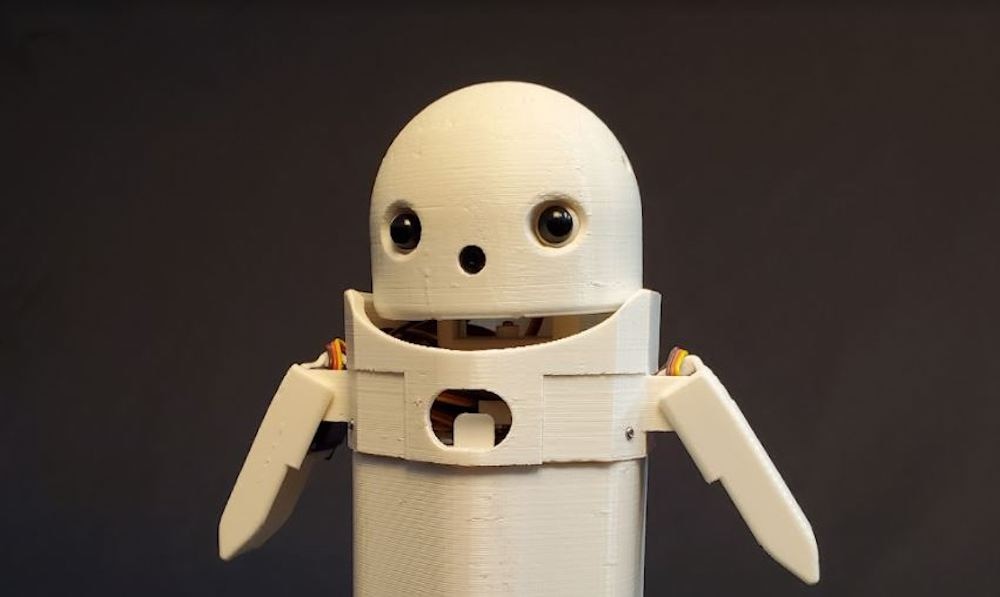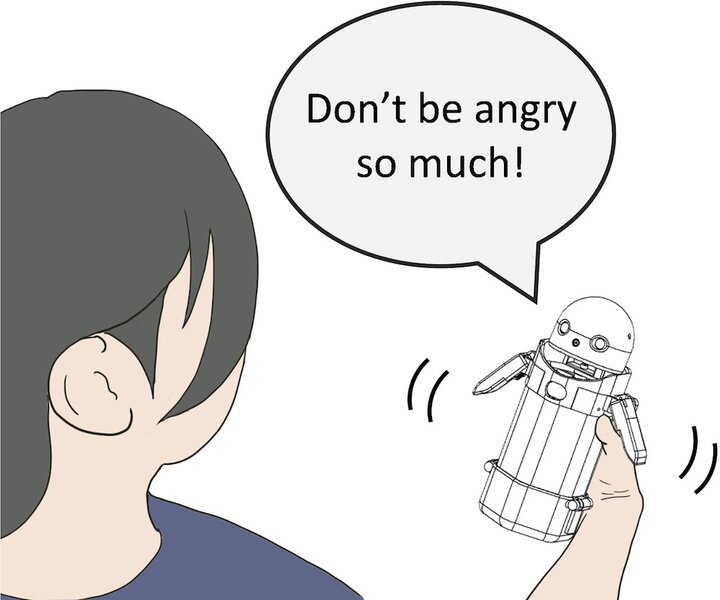Create a free profile to get unlimited access to exclusive videos, sweepstakes, and more!
As communication becomes more digital, robots could translate emotions for us
Emojis can only get us so far.

How often have you received a text or email and completely misunderstood the intent? Probably more often than you’d like. So much of human communication is based on body language, tone, and inflection, all things that text-based communication doesn’t readily allow for. Use of emojis and shorthand has done something to close that gap, but we still often misunderstand one another, sometimes to disastrous ends. Now, scientists have created a handheld robot they hope will solve the problem once and for all.
Researchers from the University of Tsukuba, in Japan, developed what they refer to as a social mediator robot as a way of conveying emotional context or softening a heated message. Their findings were published in the journal Frontiers in Robotics and AI.
The robot is called OMOY, and despite its relatively simplistic features, it’s cute enough to soften even the worst of messages. It uses shifting weights inside its body to convey simulated emotions. Coupled with the message, and additional commentary, it adds the missing contextual layer to digital communication.
The team experimented on a test group of 94 individuals, each of whom received messages telling them a friend was going to be late for an appointment and they’d have to wait. They found that use of the OMOY robot in concert with those messages reduced feelings of frustration, anger, and revenge. It was almost as if the robot was delivering the message instead of the sender, and it was doing so in an appropriately conciliatory manner.
Moreover, OMOY is capable of adding additional content that wasn’t initially included in the message. After delivering the contents of a text it might implore you to not be angry, basically communicating that things aren’t as bad as they might seem from your immediate emotional reaction. When those opinions from the robot were coupled with the tactile shift in weight, participants reported that they perceived OMOY as an intermediary presence helping them to process their emotions.
The study appears to show that the shift in weight is the key component in reducing negative emotions associated with frustrating scenarios. When the robot only delivered a message, the reduction in negative emotions like anger, avoidance, or revenge were reduced by only about 3.5%. But when they were accompanied by the shift in weight, reduction jumped up approximately 20 points.
Why weight shifts in a handheld robot so heavily impact the willingness of a user to accept the comfort it’s offering isn’t intuitively clear, but researchers have some ideas. The team believes that the tactile sensation of shifting weight is interpreted as a more costly expression to the receiver. Whether they know why or not, the addition of a tactile element prompts the brain to literally give more weight to what it’s hearing. They also suggest that the perceived cost of the robots’ movements come from the associated cost the user undertakes from holding the robot. Users feel the shift in their own bodies and automatically anthropomorphize that cost to OMOY.
It's also possible that the explanation is much simpler. Touch is known to have a calming effect on people and the weight shift of the robot is interpreted by the user as calming touch. Whatever the psychological reason, the team showed that social mediator robots can effectively reduce negative emotions associated with nonverbal communication, something which could become increasingly important as we continue toward a more digital world.
Before long, conventional phone accessories like cases, screen protectors, and headphones could have a new addition, and buying a new phone might mean choosing the right robot to work alongside it.



























